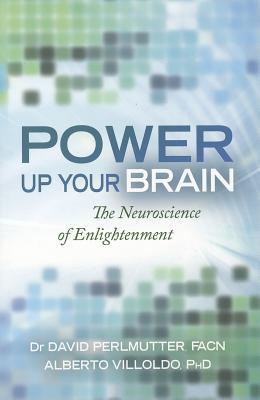More on this book
Kindle Notes & Highlights
Read between
September 9 - November 18, 2023
individuals with the lowest daily calorie intakes had the lowest risk of Alzheimer’s disease and Parkinson’s disease.
the incidence of Alzheimer’s disease among individuals living in the United States was increased compared to their relatives who remained in Nigeria.”
research clearly focused on the detrimental effects on brain health as a consequence of the increase in calorie consumption.
Americans now consume an average of 523 more calories daily than in 1970.
American adult consumes 3,770 calories each day. In contrast, most health-care professionals consider normal calorie consumption (i.e., the amount of calories needed to maintain body weight) to be around 2,000 calories daily for women and 2,550 for men,
A 30 percent reduction of calories from an average of 3,770 per day pr...
This highlight has been truncated due to consecutive passage length restrictions.
The average American now eats and drinks an incredible 160 pounds of refined sugar each year,
Lowering sugar intake alone might go a long way toward achieving a meaningful reduction in calorie consumption;
if you want to do more, you can implement a program of intermittent fasting, which we will describe in Chapter 14.
behaviors that enhance dendritic complexity and synaptic plasticity also promote successful aging and decrease risk of neurodegenerative disorders.
people with more education have a lower risk.
individuals with the best linguistic abilities as young adults have a reduced risk for Alzheimer’s disease.
Being involved in stimulating mental activities—such as problem solving, exploring novel environments, and, perhaps most important, meditating regularly—enhances BDNF production and creates a brain that is not only more resistant to deterioration but one that enables you to push the limits of day-to-day functionality.
Even among Alzheimer’s patients, the rate of disease progression is dramatically slowed in those who engage in spiritual practices,
Meditation
might well be the most powerful stimulant for BDNF production.
the main active ingredient in the spice turmeric, is currently the subject of intense scientific inquiry, especially as it relates to the brain.
in evaluating villages in India, where turmeric is used in abundance in curried recipes, epidemiological studies have found that Alzheimer’s disease is only about 25 percent as common as in the United States.
Curcumin activates the Nrf2 pathway, a recently discovered “genetic switch” that works by turning on the genes to produce a vast array of antioxidants that protect mitochondria.
the feminine life force, in the form of life-sustaining mitochondria, are the conduits through which the healing, nurturing, loving energies of the biosphere flow.
more than two-thirds of the dry weight of the human brain is fat, and one quarter of that fat is DHA.
DHA is one of nature’s important regulators of inflammation.
Inflammation is responsible for a large number of brain maladies, including Alzheimer’s, Parkinson’s, attention deficit hyperactivity disorder (ADHD), and multiple sclerosis.
The third and perhaps most compelling reason for studying DHA is its role in modulating gene expression for the production of BDNF.
researchers consider to be an adequate intake of 200 to 300 milligrams each day.
BDNF and Brain Protection
One important neurotoxin often used in laboratory animal experiments,
goes by the abbreviation MPTP
neurologist J. William Langston in his book, The Case of the Frozen Addicts: Working at the Edge of the Mysteries of the Human Brain (1997),
Langston and others ultimately concluded that MPTP destroyed neurons by destroying their specific source of energy production, the mitochondria.
CHAPTER 9 THREE CONDITIONS YOU DON’T WANT TO HAVE
ANTIOXIDANTS
Antioxidants are any of various chemical substances, including beta-carotene, vitamin C, and vitamin E, that inhibits oxidation.
tissue damage by free radicals is thought to underlie the process of aging.
in 1972, Harman recognized that mitochondria, which, ironically, are the actual source of free radicals, are also most at risk of damage from free radicals.
FREE RADICALS
Studies are now appearing that clearly point an accusatory finger at free radicals for playing a pivotal role in brain aging.
ORAL ANTIOXIDANTS
Far from being entirely dependent on antioxidants from externally derived food sources, your cells have their own innate ability to generate antioxidant enzymes upon demand when environmental signals to the cell tell the nuclear DNA to do so.
The golden key to antioxidant protection lies in your nuclear DNA.
NRF2 PROTEIN Nrf2 Protein and Antioxidants
When the body experiences high oxidative stress and produces an excess number of free radicals, it also activates a specific protein in the nucleus called Nrf2.
But what activates Nrf2?
oxidation of the omega-3 fats eicosapentaenoic acid (EPA) and docosahexaenoic acid (DHA) activates the Nrf2 pathway in dramatic fashion.
Calorie reduction, as demonstrated in a variety of laboratory models, also induces Nrf2 activation.
Among these are curcumin, which comes from turmeric; green tea extract; resveratrol; sulphoraphane, derived from broccoli; and the omega-3 fat, DHA.
Nrf2 Protein and Inflammation
activation of the Nrf2 pathway turns on the genes that produce a vast array of protective chemicals in two other critically important areas: inflammation reduction and detoxification,
dramatic elevation of cytokines, which are the cellular mediators of inflammation, in the brains of individuals with these and other degenerative brain disorders.
the key downstream effect of inflammation in the brain is that it is responsible for the damage that prevents activation of Nrf2 chemical pathways and the consequential increase of free radical production.


